Fancy a treetop view encompassing birds, insects, fungi and lichen amidst the branches? Wonder how does it feel to be inside a real beehive? Well, the Kew Gardens offers you this and more botanical wonders inside. In 300 acres, the natural haven offers galleries of botanical art, glasshouses, various gardens, eateries and more.
Kew Gardens London
Located in the Kew district of the London Borough of Richmond upon Thames in southwest London, the Royal Botanic Gardens, is the largest UNESCO World Heritage site in London. Also known as Kew Gardens, it is also the largest botanical collection in the world.
Featuring 18th to 20th century landscaping techniques and elements, the Kew Gardens house the most diverse botanical and mycological collections in the world, representing nearly 95% of the vascular plants and 60% of the fungi.
The Kew Gardens is a leading conservation and scientific lab, and home to plant scientists who study more about plant diversity.
Kew Gardens - In a Nutshell
Kew Gardens - Things to know
| 📍 Location: | London |
| ⏰ Suggested Duration: | 3 Hours |
| ☀️ Best Time to Visit: | April - May or June - July |
| 🎟️ Kew Gardens Tickets: | €11 |
| 🚇 Closest Subway: | Victoria Gate |
Kew Gardens Opening Hours
Weekdays: 10am - 7pm with the last entry at 6pm.
Weekends: 10am - 8pm with the last entry at 7pm.
Must-see at Kew Gardens
Queen Charlotte's Cottage
The Temperate Glasshouse
Pagoda
Xstrata Treetop Walkway
Kew Gardens Address
Royal Botanic Gardens, Kew Road, Richmond,
London TW9 3AB, United Kingdom.
Get there
Which Kew Gardens tickets should you buy?
Depending on whether you're a history lover, nature enthusiast or architecture admirer, your itinerary may vary. Hence it is important to plan ahead, skip the lines and book the best experience.
You may choose to book one of Headout's pre-planned tours , crafted combining the best experiences including the Kew Gardens in a package or book your Kew Garden tickets individually on the Headout app for just €11.
Why visit Kew Gardens?
- With many galleries and natural retreats inside, Kew Gardens has a lot to vouch for.
- The rare and extinct species residing in the Kew Gardens are a wonder to look at and can exclusively only be found here. The Library inside contains 750,000 volumes and illustrations and is great way to learn about the plant families, their evolution and conservation.
- All the structures found inside have historical significance, and the tales behind them are fascinating. From chinoiserie to glass structures, the buildings are also architecturally diverse in nature.
- While he colourful blooms are a visual treat, the gardens can be the calm to the chaos of the outside world, and is a great way to connect back to nature.
In short, Kew gardens is the best bet if your looking for an educating and entertaining trip, in the cocoon of nature.
Plan your visit
Best time to visit the Kew Gardens
Spring (April to May) is when the garden start showing signs of new blooms and starts displaying its eye-catching flora collections. Summer (June to August) is the time when the flowers and deciduous trees are in its best form.
Autumn, though not the best season to see the flowers, the crowds are lesser, and you get to experience the changing seasons. Even though the garden thrives inside the greenhouse, it is suggested to skip the visit in Winter.
It’s worth checking the website to find out what each season has to offer in detail.
Kew Gardens Opening hours
Kew Gardens open every day except for the 24th and 25th December.
On weekdays they are open from 10am - 7pm with last entry at 6pm.
On weekends they are open from 10am - 8pm with last entry at 7pm.
From 1 May to 30 September 2022, they do early openings for members at 8am.
The closing time may vary depending on seasons (due to the shorter days).
Getting to Kew gardens
By Bus
- The following bus routes take to the Kew Gardens stop –
- 65 (stops near to Lion, Elizabeth, and Victoria Gate)
- 110 (stops near to Kew Gardens station and Elizabeth Gate)
- 237 and 267 (stops at the Kew Bridge station)
By Tube
Just a 15-minute walk away, the nearest station is Kew Gardens station (in Zone 3) which is located just 500m from the Victoria Gate.
By Train
The closest station is the Kew Bridge Station, which is 800m from the Elizabeth Gate entrance.
History behind the Gardens
Tracing its origins to the 18th century, the Kew Gardens were different estates belonging to the members of the Royal Family. It was Princess Augusta who created the first botanical garden with the assistance of Lord Bute and architect Sir William Chamber. King George III joined his estates of Richmond and Kew in the year 1802, and with the assistance of William Aiton and Sir Joseph Banks he started working on the landscape of the estates.
When the ownership of Kew Gardens was transferred from the Crown to the Government in the year 1840 due to negligence for years, it was renamed and taken in as the national botanical gardens and then expanded to start the Kew Gardens under its director William Hooker and its first curator John Smith.
Now the Kew Gardens are home to the Palm House which is ‘the world's most important Victorian glass and iron structure’, the Temperate House which is ‘the largest Victorian glasshouse’ in existence, and many more attractions created over the years.
The Kew Gardens were officially recognised among the World Heritage Sites in the year 2003.
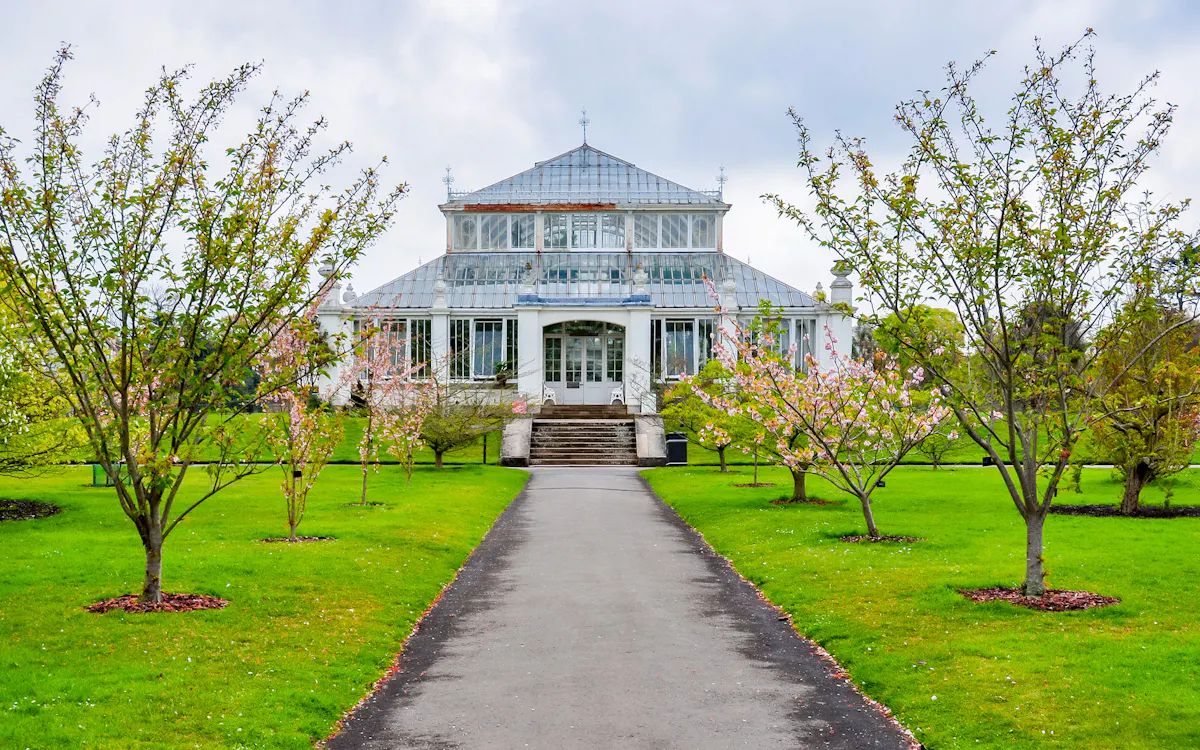
Top things to see at Kew Gardens
1Queen Charlotte's Cottage
The 17th century cottage was a rustic retreat for the royal family to rest, drink tea or have picnics while visiting the gardens. The paddock adjacent to the cottage once housed many exotic animals including the first kangaroos to arrive in the country, now extinct quagga, a pair of black swans, and buffaloes. You can see the Queen’s own collection of Hogarth prints in the print room downstairs or view Princess Elizabeth’s, the Queen’s daughter’s floral and bamboo artwork in the tearoom.
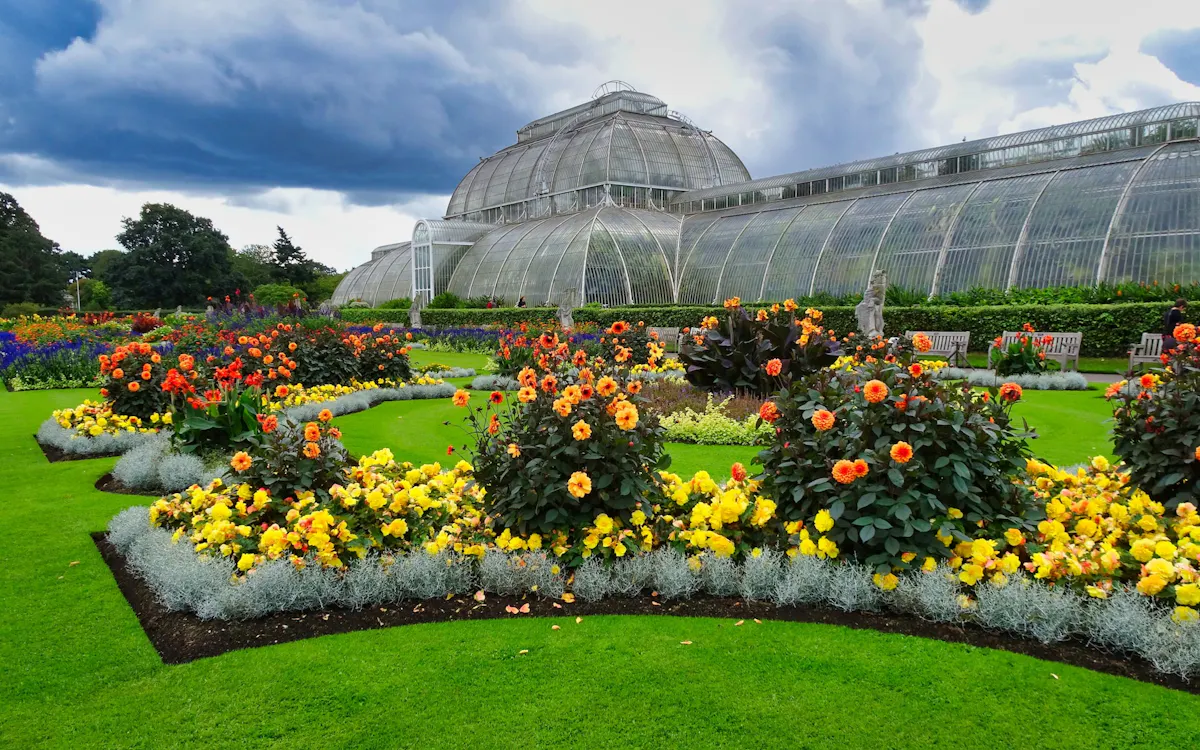
2The Temperate Glasshouse
The glasshouse is home to the world’s rarest and most threatened temperate plants, including 6 species that are extinct and in the red list. The world’s largest surviving Victorian glasshouse covers a massive 4,880 square metres and its tallest peak is at 19 metres high.

3Pagoda
With Chinese Chippendale railings and curved roofs, the chinoiserie building was entirely designed by the Swedish-Scottish architect Sir William Chambers. Built in the 18th century, it was a gift to Princess Augusta, who had employed him to construct many features in the garden. Offering the earliest and one of the best bird’s eye views of London, the Pagoda also holds exhibits on the building’s history.
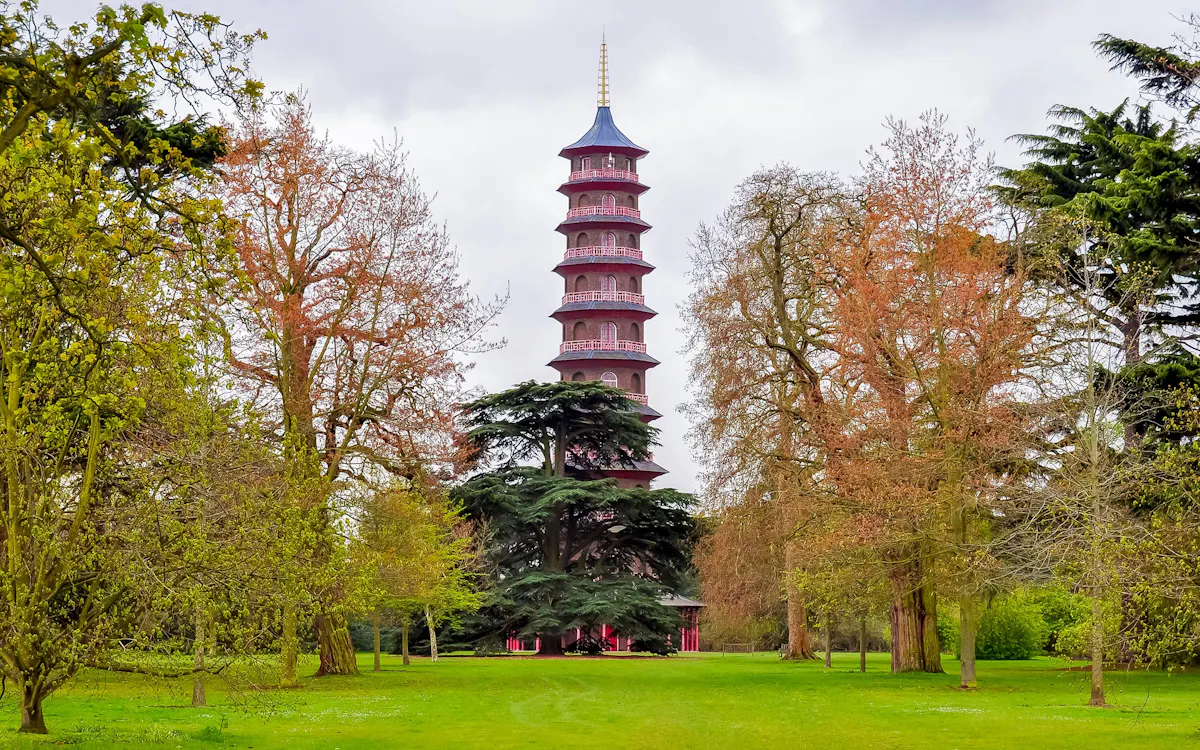
4Xstrata Treetop Walkway
Offering a magnificent bird’s eye view of forest canopy, the walkway is one of Kew Garden’s most popular attractions, especially to those who love a kick of adrenaline. Standing 18 metres tall and 200 metres long, the walkway is designed to slightly sway in the wind to give a more immersive experience through the foliage.
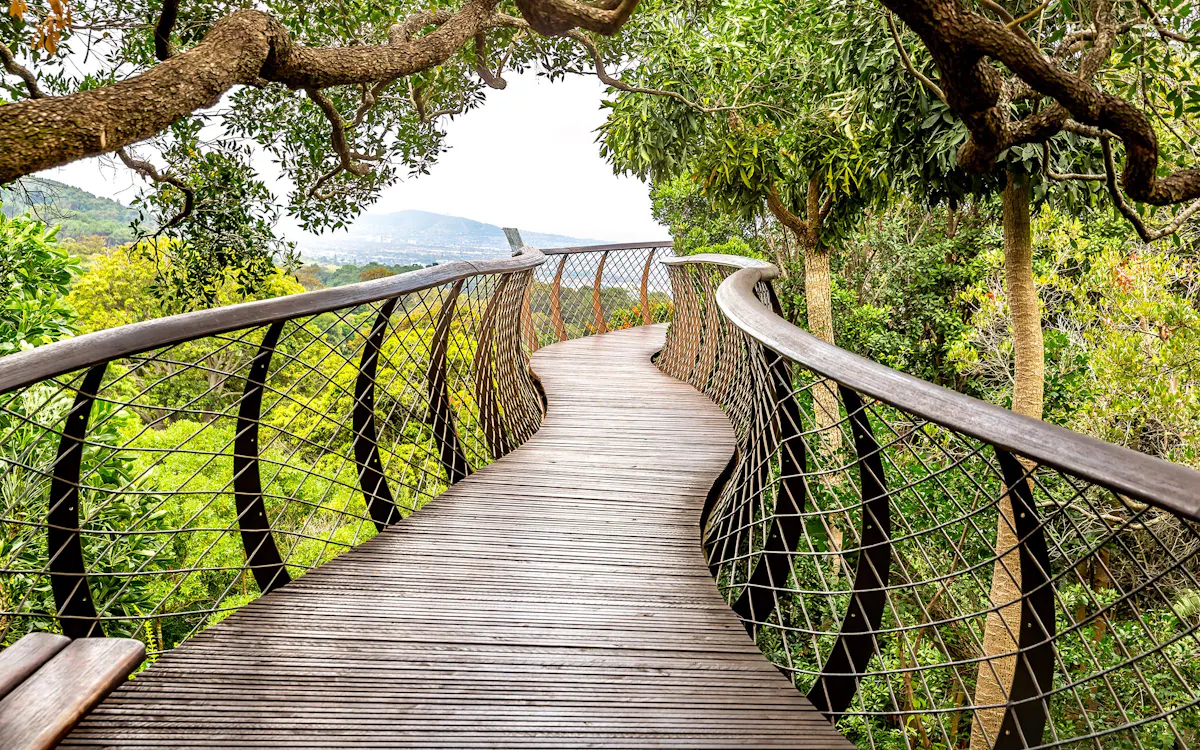
5Palm House
Home to an exquisite collection of endangered and extinct plants including the cocoa tree or the African oil palm, you get to experience a slice of rainforest in the Palm House. Constructed in 1844, the greenhouse resembles an upturned hull of a ship as the architects borrowed ideas from the ship building industry to construct it. The humid environment inside creates the perfect environment for the lush plants and is home to the oldest pot plant in the world (more than 250 years).
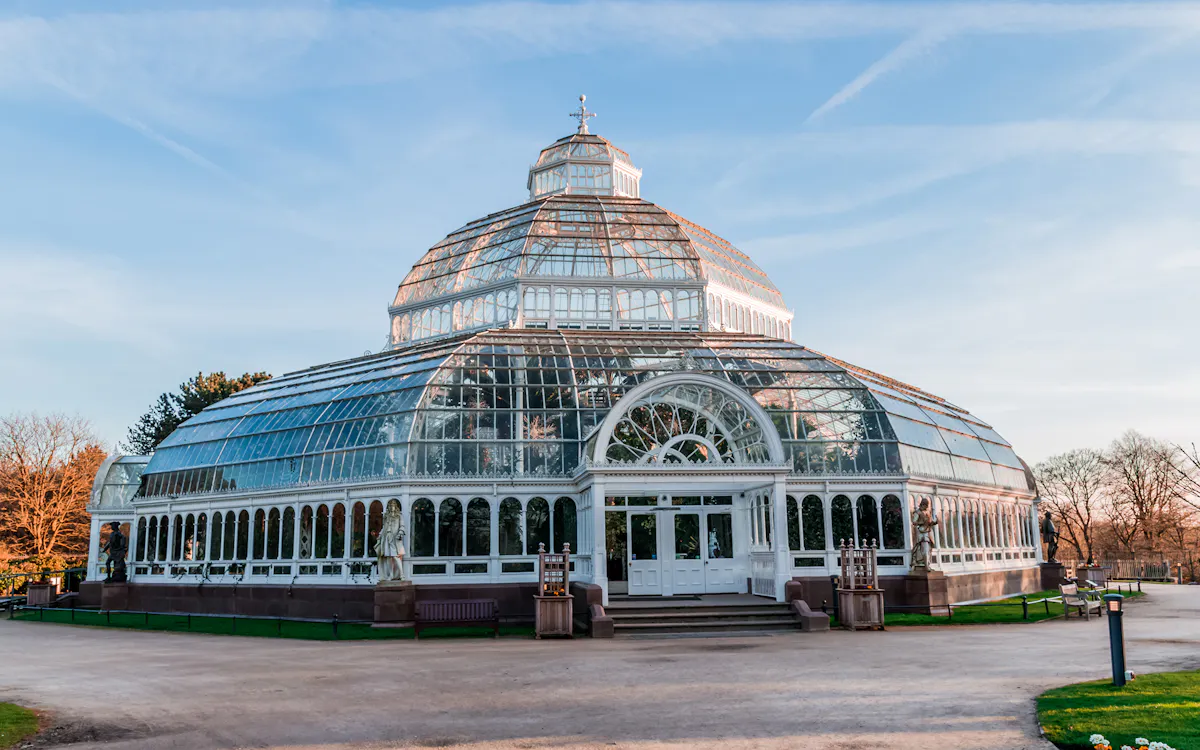
6The Hive
The mesmerising geometric installation, standing tall at a towering 17 metres tall, features an immersive visual and auditory experience recreating the life inside a beehive. With 1,000 LED lights that glow according to vibrations of bee and 170,000 aluminium parts, the structure mimics the real visual effects of an actual beehive in Kew Gardens. A calming and serenading symphony of vocals and cello, all in the key of C is played to create a soundscape inspired by the hum of the bees (Scientists discovered bees buzz in the key of C).
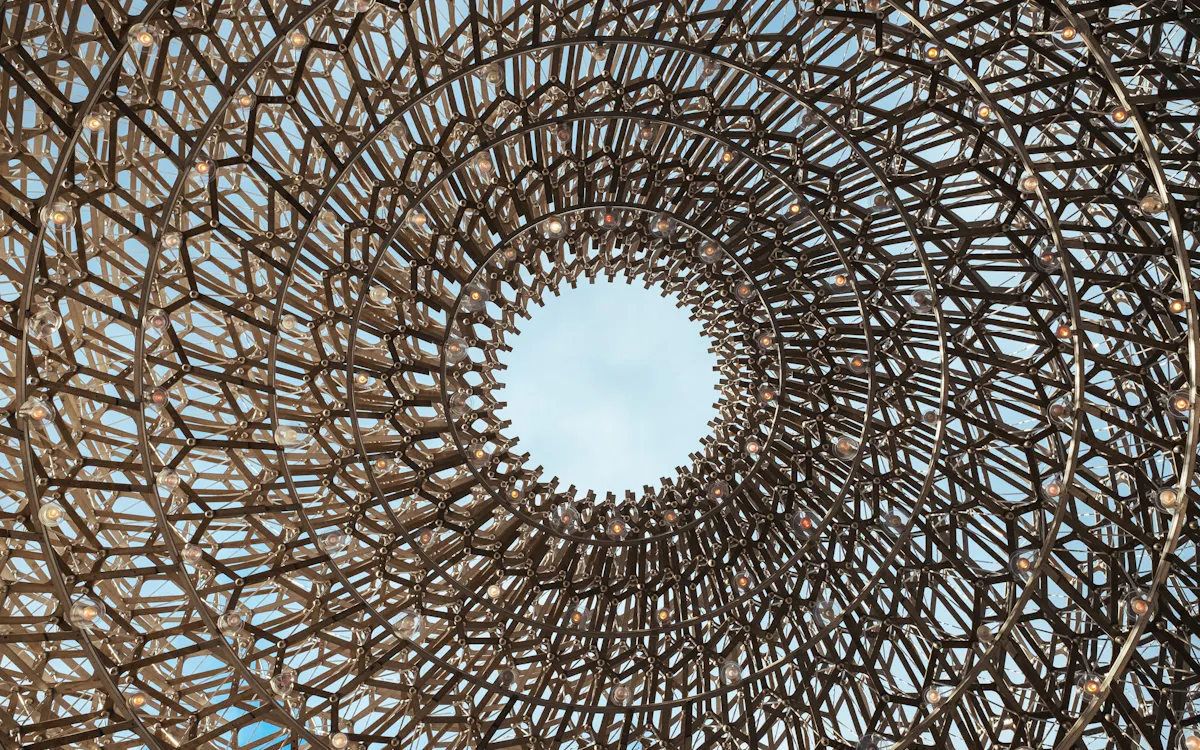
7Kew Palace
Known as the smallest palace in the whole country, it was originally built in 1631 for Samuel Fortrey a silk merchant. The Dutch house is one of the few surviving structures in the Kew Palace complex, along with the former brewhouse, housekeeper's cottage, and kitchen. Except for the kitchen, all the structures are open for public. In the 1720s, George II and Queen Caroline lived there. Later the palace became a refuge for George III when he was experiencing mental illnesses and Queen Charlotte who was taken in ill and passed away in the palace. Reflecting the intimate life of the royal families, the palace is a tale in itself.

8Waterlily House
Featuring a circular pond spanning over 10 meters, the Waterlily house is the most iconic and second oldest of Kew Garden’s glasshouses. This glasshouse was specifically made to breed the giant Amazon waterlily (Victoria amazonica). The pond is also home to the Santa Cruz waterlilies (Victoria cruziana) known for its floating large lily pads which can grow up to 2 meters in size. In summer, you will be able to spot lotus, papyrus and more.
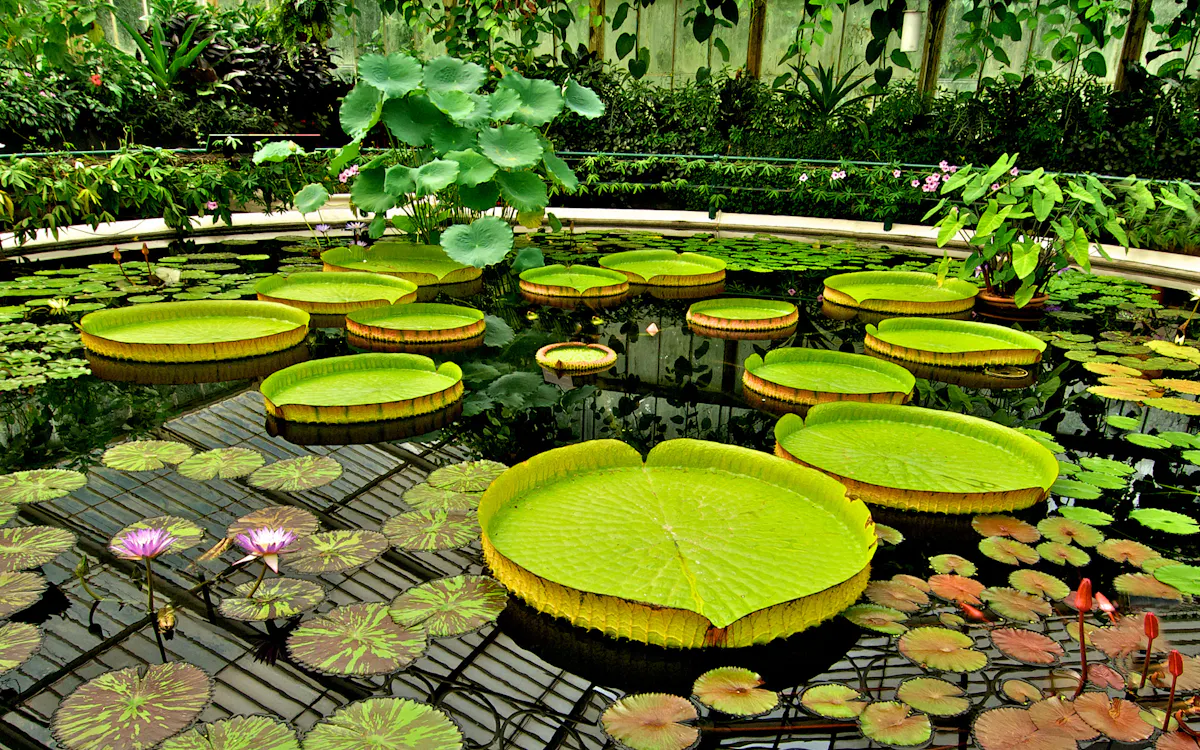
9Davies Alpine House
Housing the Alpines, usually found in the mountaintops or the earth’s poles, these plants grow in extreme cold. The Davies Alpine House was designed to recreate these same extreme conditions, using two back-to-back arches to draw warm air out of the building. The glasshouse is known for its sustainable structure and energy efficient environment created using biomimicry techniques, inspired by the passive cooling found in termite mounds.
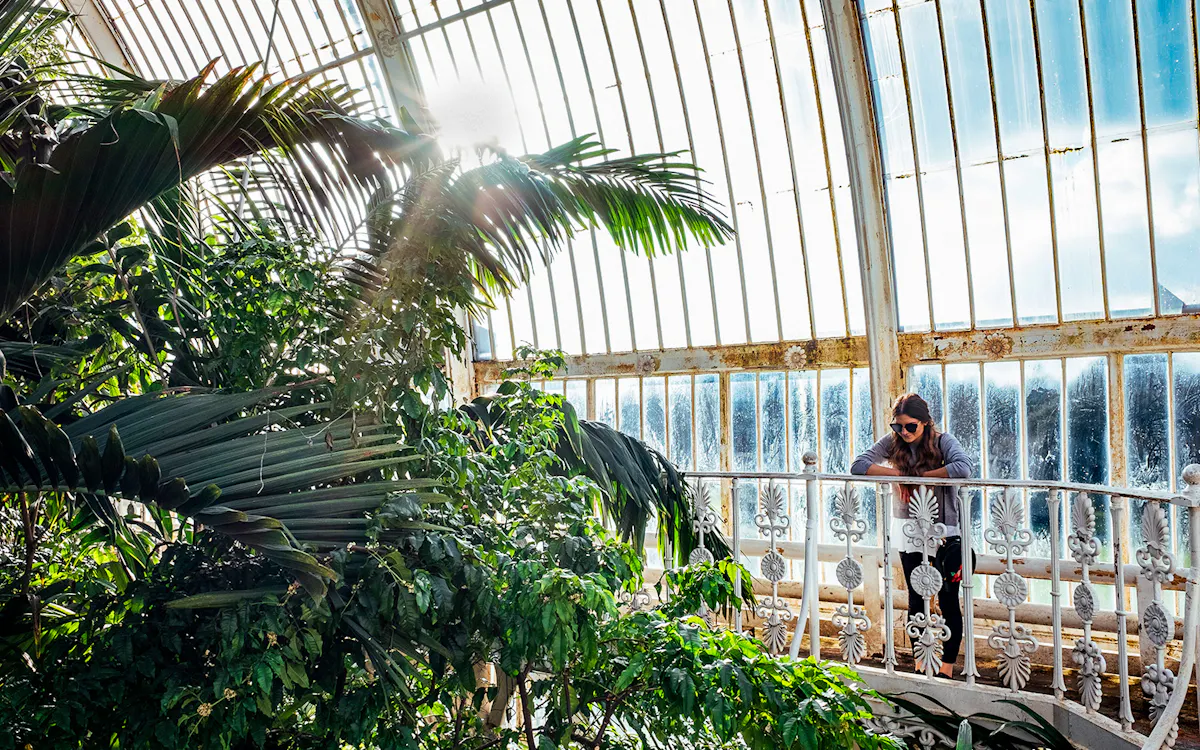
10The Princess of Wales Conservatory
Opened in 1987 by Princess Diana, the conservatory boasts of 10 different climatic zones, taking you through a series of captivating ecosystems. Spanning over 4500 meters, the conservatory has recreated computer-controlled tropical rainforests to arid deserts in the glass structure. From Venus flytraps to bright bromeliads, the conservatory is home to all types of plant species.

Map of Kew Gardens
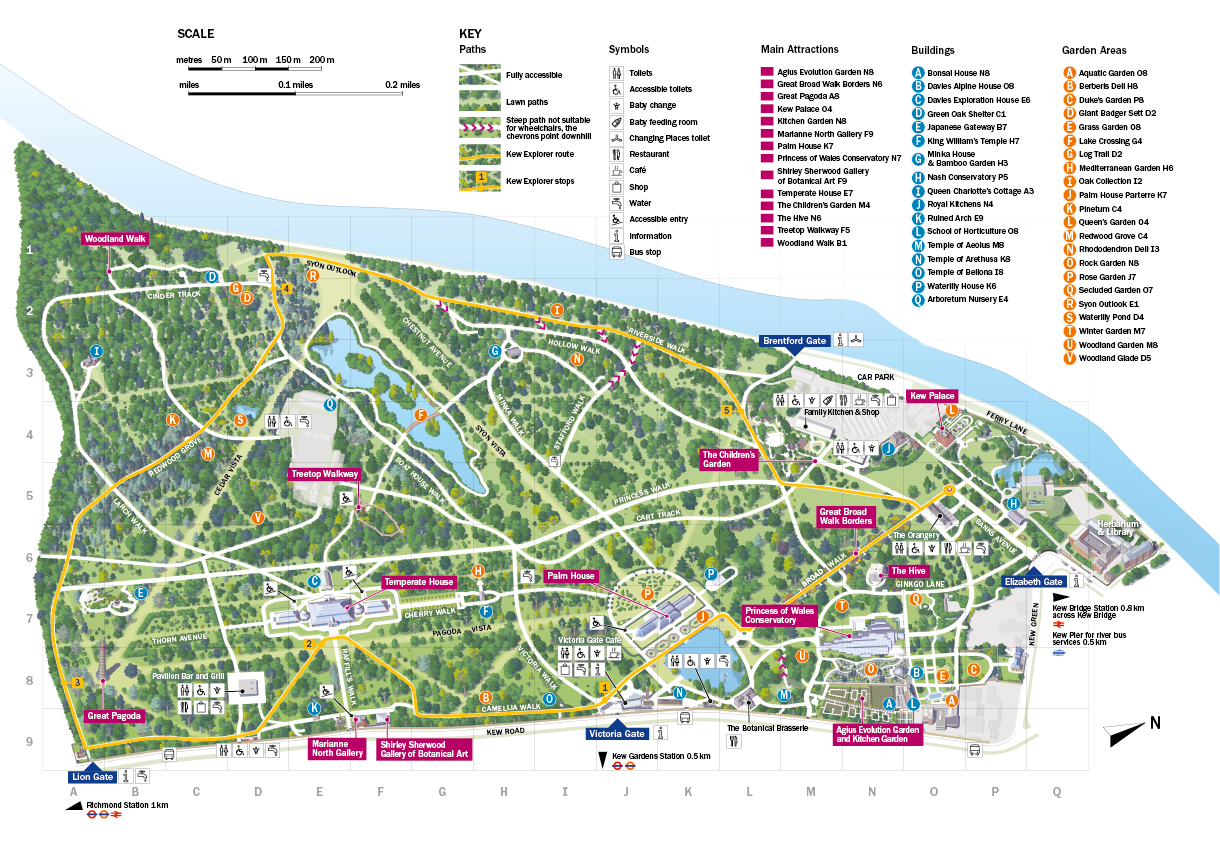
Facts you probably didn't know about Kew Gardens
- Kew Gardens contain a part of old London Bridge. The four granite blocks placed of the banks of the lake near the Sackler Crossing were once part of the 19th century bridge.
- The loneliest plant in the world, the Encephalartos woodii resides in the Kew Gardens. Found all alone in the Ngoya Forest in southern Africa by the botanist John Medley Wood, the tree was once munched by dinosaurs.
- The Kew Gardens are the most biodiverse place in the entire planet earth owing to its diverse collection of flora.
- Initially designed as a temporary exhibit for the UK Pavilion at the 2015 Milan Expo, the Hive found its final home in the Kew Gardens.
Best recommended tours to the Kew Gardens
Below are the tickets and tours to the Kew Gardens via the Headout app, for a seamless and stress-free booking experience.
Restaurants in Kew Gardens
Here are the top three places to eat at inside the Gardens.

Sporting the Charlie and the Chocolate Factory meets botanical lab looks, this restaurant is meant to make visitors feel as if they have shrunk into tiny creatures beside the fungi sculptures and giant apple seats. The whimsical restaurant offers stone baked pizza (customisable), salad bar, artisan sandwich station, ice cream booth and more. It is a fun place to hang out with kids and a definite visit for design junkies and sustainable interior enthusiasts.
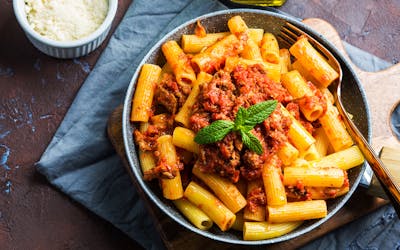
Giving a sleek and modern feel, the steel frame along with the outdoor seating located amid the Arboretum, a unique landscape of 14,000 trees gives a calming picnic-in-the-trees vibe. The mid-range eatery features pork belly ribs, spatchcock chicken and vegan patties, all infused with the herbs from the Kew Garden itself. Though not cheap, they do offer a children’s menu and a family sharing platter.
Find on Map >
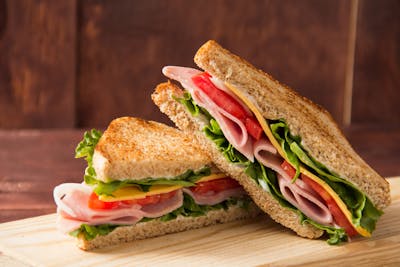
The 18th-century building is sure to captivate you with its high ceilings and arched windows, along with the view from the terrace. The restaurant offers pastries, selection of sandwiches, freshly squeezed juices and more. Built in 1761 by architect Sir William Chambers, the teahouse is perfect for the British afternoon tea experience.
Find on Map >Accessibility at Kew Gardens
- Kew Gardens are susceptible to overhead noise due to its proximity to the Heathrow Airport flight path. Those with sensory disorders, noise sensitivity, etc would be advised to carry earplugs or headphones to avoid disturbances.
- 8 disabled car parks are available near the Brentford Gate, and 2 to the right of the Elizabeth Gate.
- There are unisex accessible toilets in all the washrooms.
- Brentford and Victoria Gates offer mobility scooters for hire, but they should be booked in advance.
- Only the Temperate House and Alpine House are the glassdoors accessible via wheelchairs/mobility scooters.The Princess of Wales Conservatory is partially accessible to wheelchairs during the Orchids festival.
- Kew Palace is accessible for wheelchair users, however small wheelchairs are required due the narrow paths inside.
- Though most of Kew Garden’s landscape is accessible via ramps, the following areas are not accessible with buggies - Queen Charlotte's Cottage, The Waterlily House, Xstrata Treetop Walkway, Galleries in both the Temperate House and the Palm House, The Waterlily House, The Aquatic Display in the Palm House , Queen Charlotte's Cottage, Kew Palace.
Good to know before visiting Kew Gardens
- Unless accompanied by an adult, children under the age of 16 are not permitted inside.
- Only adults with children are allowed inside the Children’s Garden(with a valid ticket).
- Visitors with disability can get a concession ticket.
- Carers accompanying visitors with a disability, such as registered blind and partially-sighted visitors can get in for free.
- Guide or assistance dogs (including those in training) can enter. Though make sure to have a lead or harness to identify them.
Insider tips
- Wear airy clothing, preferably a removable jacket as it can get really warm in the greenhouse.
- Wear comfortable footwear, as the walks around can be long.
- Do not forget to carry a good quality phone camera or your camera equipment with an empty memory card or those with lots of space to click enough pictures, and you do not want to miss on it.
- Do not hold yourselves back from spending the whole day there, in fact it is highly recommended.
- Though there are enough eateries around, don’t skip carrying snacks for your toddlers (and yourself) to munch on as the long walk inside may be tiring after a while (Food and drinks should not be taken inside the galleries).
- Some of the best picnic spots inside the Kew Gardens are - Next to the River Thames (marked as a viewpoint on the map), near the Waterlily Pond and in front of Queen Charlotte's Cottage.
More...




